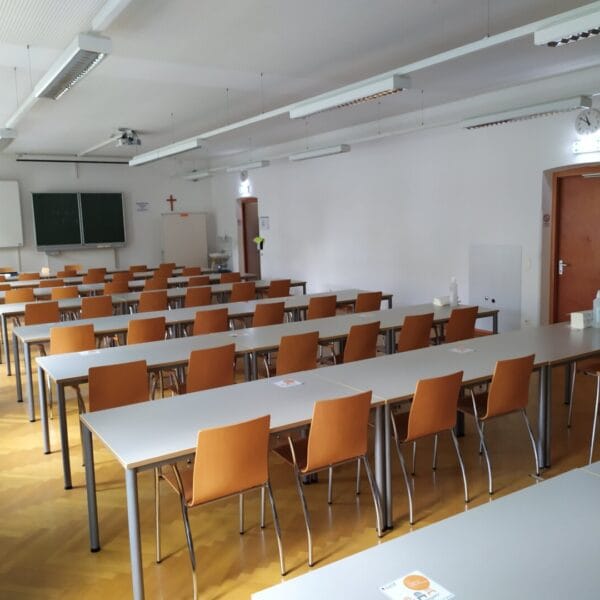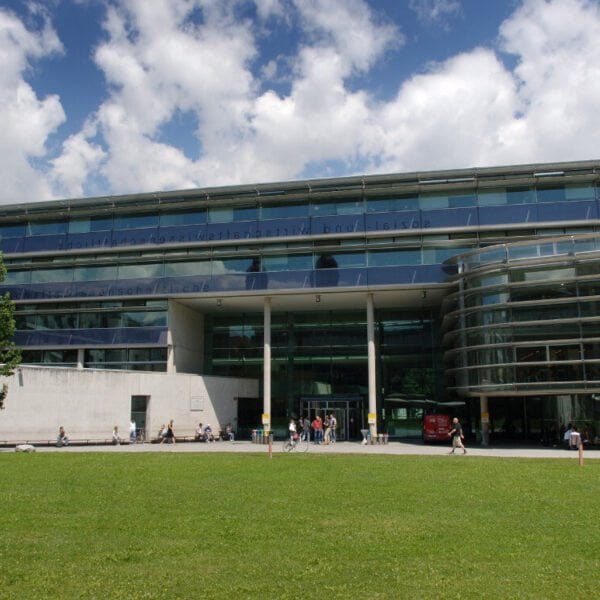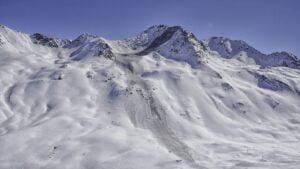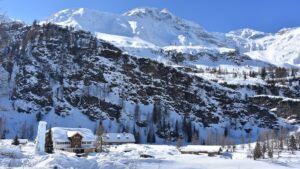ID11: Climate Change And Mountain Recreation
Details
Full Title
The Most Challenging Expedition: The Future of Winter Recreation in an Era of a Rapidly Changing Climate
Scheduled
Monday, 2022-09-12
Oral Session: 16:00 - 17:30
Poster Session: 17:45 - 18:30Convener
Co-Conveners
Graham McDowell, Brooklyn Rushton and Natalie Knowles
Assigned to Synthesis Workshop
1. Mountain Ecosystems under Global Change
Keywords
Climate change, adaptation, mountain environments, outdoor tourism, recreation
Description
Mountains have experienced rapid and intense warming over the last few decades, resulting in glacial retreat and diminished snowpacks, which in turn has negatively impacted mountain tourism. The limited literature exploring this topic indicates that climate change will directly (e.g., shorter seasons) and indirectly (e.g., increase occurrence and severity of natural hazards) impact winter recreation. Despite extensive literature documenting these changes, research examining how residents, tourism operators, and key stakeholders in mountain communities experience, respond, and adapt to climate change is underdeveloped. This lack of information undermines our ability to devise adaptation plans capable of securing just and sustainable futures for mountain regions and their communities. Thus, the purpose of this session is to provide a synthesis of research on climate change and winter recreation, including stakeholder perceptions, adaptation strategies, and research gaps that need to be addressed to advance adaptation in tourism-reliant mountain communities.
Registered Abstracts
Abstract ID 102 | Date: 2022-09-12 16:00 – 16:12 | Type: Oral Presentation | Place: THEOLOGIE – SRVI |
Rice, Harald (1); Scott, Daniel (2); Steiger, Robert (3); Cohen, Scott (1)
1: Surrey University, United Kingdom
2: Waterloo University
3: Universität Innsbruck
Keywords: Climate Change, Skiing, Snowsports, Sweden
Tourism industry and government demand for knowledge of the impacts of climate change on ski tourism is growing. Despite the more than 70-year history and large cultural significance of alpine skiing in Sweden, little is known about the industry’s future under a changing climate. This study applies the SkiSim2 model with low to high emission scenarios (RCP2.6 to 8.5) to analyse the implications of climate change for ski operations (season length, snowmaking requirements) at 23 alpine ski areas across Sweden for the early, mid and late twenty-first century. Northern areas of Sweden show much less reduction in average season length compared to central and southern Sweden under the high emission mid- (13% versus 58% and 81%) and late-century scenarios (27% versus 72% and 99%). To limit season losses in these scenarios, snow production increases of over 250% are required in all regions. Such increases will create additional financial and environmental stressors, which may lead to the closure of the most at-risk resorts. With greater impacts projected for much of the European Alps ski market, northern Sweden may represent a ‘last resort’ for the European ski industry under higher emission scenarios by the mid-late twenty-first century.
Abstract ID 820 | Date: 2022-09-12 16:12 – 16:24 | Type: Oral Presentation | Place: THEOLOGIE – SRVI |
Cognard, Jonathan (1,2); François, Hugues (1); Berard-Chenu, Lucas (2); Renou, Yvan (2)
1: INRAE
2: UGA
Keywords: Ski Resorts, Snowmaking, Water Demand, Reservoirs, French Alps
Alpine skiing is a key sector for the economy of French mountain regions. Snowmaking has become the main strategy to adapt to the interannual variability of snow cover and is considered as an adaptation strategy to the declining trend in snowfall in order to address climate change issues (Steiger et al, 2017). This practice is regularly criticized because of the large volumes of water used. While most studies focused on the role of snow production on the snowpack reliability, few studies have focused on the evolution of water needs. However, many authors highlight the need to better understand the risks of water use conflicts in the mountains (Reynard et al 2001, 2014, 2020; Beniston et al., 2013). In this work, we highlight the determinants of water withdrawals in ski resorts. We used a mixed qualitative/quantitative approach. First, semi-directive interviews feed our theoretical reflexions. Then an empirical analysis using econometrics methods is conducted using an original panel dataset giving information on water withdrawals of about thirty ski resorts in the French Alps over 7 years coupled with financial, meteorological and ski area characteristics data. Different estimators are used to measure the sign, intensity and significance of several factors in determining water withdrawals, such as natural snow cover conditions, the construction of new reservoirs or the altitude of ski areas. The results allow us to better identify the factors that explain the water requirements for snow production in ski resorts, and to make more accurate projections. They feed into ongoing discussions to ensure that current socio-economic decisions do not lead to future water use conflicts in mountain socio-ecosystems. This will only be the case if the availability of water resources is sufficient to satisfy the various needs, and this work addresses one of them.
Abstract ID 395 | Date: 2022-09-12 16:24 – 16:36 | Type: Oral Presentation | Place: THEOLOGIE – SRVI |
Voorhis, Jimmy (1); Burakowski, Elizabeth (2); Mcdowell, Graham (3); Luneau, Taylor (1)
1: American Alpine Club
2: University of New Hampshire
3: University of Calgary
Keywords: Ice Climbing, Historical Photos, Climate Modeling, Focus Group, Climate Analogues
This study considers the impacts of climate change on ice climbing and the winter guiding community in the ice-climbing hotbed of Mount Washington Valley, New Hampshire, by combining archival photo analysis, climate modeling, and social research methods. The Mount Washington Valley was among the first areas where modern ice climbing was popularized and supports a vibrant winter climbing community with numerous guiding concessions.
A weekly ice climbing conditions report maintained since 2001 (www.NEClimbs.com) includes photographs of popular ice climbing routes at crags throughout the Mount Washington Valley. The photographic record (n = 330) for Standard Route (WI3), a frequently guided climb, was analyzed by an experienced guide who rated ice quality based on the presence of ice and perceived hazards visible in each photo (e.g. holes, running water, etc.). Annual season lengths were estimated based on the number of records with climbable ice. The resulting dataset was date-aligned with daily temperatures recorded at similar aspect and elevation ~11km distant from Standard Route. Observed season lengths were positively correlated with the number of days with average temperatures below zero (R-squared = 0.71).
The study team used locally constructed analog climate model ensembles for the region surrounding Standard Route to simulate maximum and minimum daily temperatures for the period 1980 through 2100. Average daily temperatures were used to estimate days below zero and cumulative freezing potentials for each season. Season lengths are expected to decrease by 30 and 60 days (from 100 days) on average under RCP 4.5 and RCP 8.5 by 2100, respectively, suggesting some winters with no climbable ice are probable under a high-emissions scenario.
Mount Washington Valley guides participated in a survey (n = 20) and focus group (n = 5) oriented around their observations of, and impacts and adaptations to changing winters. Variables which reduced guides’ abilities to consistently deliver positive experiences to their clients included fewer days of climbable ice, warmer than normal temperatures, and frequent rain events. Guides cited increased visitation, social media hype, and warming impacts as variables which compounded risk and hazards on popular ice climbs. Adaptations included shifting schedules to days with favorable weather, ‘scouting’ climbs in the days prior to guiding, and choosing rock climbing over ice climbing.
This study contributes to emerging research examining the consequences of a warming climate for winter recreation in mountainous areas by providing insights relevant to recreation-focused adaptation planning in (and beyond) the Mount Washington Valley.
Abstract ID 361 | Date: 2022-09-12 16:36 – 16:48 | Type: Oral Presentation | Place: THEOLOGIE – SRVI |
Walter, Anna-Maria
University of Oulu, Germany
Keywords: Skiing, Alps, Winter, Tourism, Sports
In recent decades, fans of the great outdoors have had to cope with warmer winters, unreliable weather patterns, and temporal shifts in the ski season from Christmas to Easter. This scenario is intensified in lower mountain regions, such as the Bavarian Alps, where ski resorts readily experience the economic effects of uncertain winter snowfalls. In the face of climate change, some environmental activists call to discourage tourism altogether, mainly to preserve the mountain landscape and cut emissions. Meanwhile, national and transnational groups such as the Alpenverein (Alpine Club) and local tourism initiatives promote less intrusive forms of skiing, snowboarding, and snowshoeing. The growing trend of ski mountaineering is often championed as one way forward. Yet, the increasing number of ski tourers (often day trippers) disturbs previously quiet mountains and sensitive forest areas, pressures only accelerated by shuttered or limited-access resorts over the past pandemic winters. How do ski mountaineers who perceive their sport as sustainable leisure activity cope with this dilemma?
While much tourism research concentrates on built infrastructure and economic stakeholders, this paper, based on ethnographic data collection, shifts the focus onto the tourists themselves – a sport-oriented and ‘nature’-loving clientele that engages individualistically with mountain spaces, often remaining independent of local commerce. Since many see themselves as carefully attuned to issues of environmental change, they are a group that holds creative potential for the development of future strategies for sustainable winter tourism, both bringing in their own ideas and expectations as well as finding ways to generate revenue. By exploring experiences, views, and practices of ski mountaineers towards the mountains’ ecosystem, this research contributes to emerging debates in human geography and the environmental humanities, and urges the need for on-the-ground, off-the-piste research in mountain spaces threatened with rapid socio-environmental change.
Abstract ID 120 | Date: 2022-09-12 16:48 – 17:00 | Type: Oral Presentation | Place: THEOLOGIE – SRVI |
Berard-Chenu, Lucas (1); Pachoud, Carine (2); Francois, Hugues (3); George, Emmanuelle (3)
1: Univ.Grenoble Alpes, INRAE, Météo-France, France
2: Univ. Grenoble Alpes, UMR Pacte, Labex ITTEM, France
3: Univ.Grenoble Alpes, INRAE, France,
Keywords: Path Dependence, Societal Change, Ski Tourism Industry, Sustainability Transition
Many mountainous regions in Europe show a high degree of economic specialisation, including the tourism sector. The ski tourism industry is a part of the long-standing economic success of Alpine regions. However, these regions remain dependent on snow availability and have to deal with the long-term decrease in snow cover reliability because of climate change. Alpine regions have to consider both the evolution of tourism practices and the increasing requirements of their local communities. Tourism mountainous areas are a fork in the road. They gear towards two strategies that indicate the ongoing transformations in ski tourism-dependent regions, between reinforcement of existing path development or transition.
One noticeable trend is the enforcement of the prevailing ski industry. Increasing ski industry-related investments points out a path dependence process. Recurring investments have led to a structural lock-in while the highly specific knowledge accumulated has contributed to a cognitive lock-in.
The other strategy is to embark on a transition process to reduce ski tourism dependency. Public policies increasingly support the diversification of tourism activities. Beyond the development of other types of tourism, diversification raises the question of reorientation of the mountain economies. More and more, local initiatives are emerging in these territories to develop crafts, agriculture or services. However, these initiatives are not yet fully integrated into the dominant model.
To understand how diversification policies and local initiatives may engage a new path development, we apply the conceptual framework of transition to ski tourism. It contributes to highlighting both the factors in initiating transition as well as the drivers of path-dependence processes that could impede changing in tourism mountainous environments.
Abstract ID 416 | Date: 2022-09-12 17:00 – 17:12 | Type: Poster Presentation | Place: THEOLOGIE – SRVI |
Pons, Marc; Albalat, Anna; Margalef, Aina; Traperero, Laura; Vilella, Marc; Travesset, Oriol
Andorra Research + Innovation, Andorra
Keywords: Climate Change, Winter And Mountain Tourism, Resilience, Innovation
Winter Tourism industry has been indetified as one of the most vulnerable industries to climate change due to the expected changes on snow availability and temperature increases. The presentation aims to explain different cases in the Pyrenees and specially in Andorra Ski and Mountain resorts where the approach of Open Innovation Living Lab’s has been implemented to collaboratively the industry, the public administrations and researchers, better understand climate vulnerability and jointly, co-create, prototype, implement and test innovative solutions that can help to be more resilient and sustaianble to present and future climate change. The presentation will present the framwork used and some cases of success that has endedn to innovative projects or technological solutions that the mountain resorts are implementing to be more climate resilient.
Abstract ID 121 | Date: 2022-09-12 17:45 – 17:47 | Type: Poster Presentation | Place: SOWI – Garden |
Moulin, Sabine Marie
Université Savoie Mont Blanc, France
Keywords: Law, Land Use Planning, Climate Change, Mountain
Two years ago, together with a geographer, I presented the implementation of French Mountain law provisions (Loi n° 2016-1888 du 28 décembre 2016 de modernisation, de développement et de protection des territoires de montagne) regarding climate change in three urban plans in the Nothern Alps whose territories were chosen for their different spatial scales (municipalities’ plans, intermunicipalities’ plans and territorial coherence programs), as well as contexts (high and medium mountain areas) and development models : the local urban plan of Chamrousse, a medium-size ski resort located in near Grenoble ; the intermunicipality plan of Cœur de Chartreuse, a collection of small ski resorts reorientating their tourist activities ; and the territorial coherence program of Tarentaise-Vanoise known for its high altitude ski resorts.
During the winter 2020 French ski resorts were closed due to coronavirus pandemic, enhancing the dependence of ski resorts on tourism and in 2021 rushed by the judiciary and the citizens, France passed an Act on climate change and on a greater resilience to its impacts (Loi n° 2021-1104 du 22 août 2021 portant lutte contre le dérèglement climatique et renforcement de la résilience face à ses effets).
In this context, we here want to analyse the changes brought by this Act in the land use planning of the aforementioned territories and the capacity of local authorities to tackle climate change issues.
Abstract ID 119 | Date: 2022-09-12 17:47 – 17:49 | Type: Poster Presentation | Place: SOWI – Garden |
Cherkassova, Vasilisa; Frolov, Denis; Rzhanitsyn, German; Sokratov, Sergey
Faculty of Geography of Lomonosov Moscow State University, Russian Federation
Keywords: Climate Change, Mountain, Ski, Snow Making
Due to the climate warming and redistribution of snow cover over the past decades, ski resorts in all parts of the world are faced with a lack of natural snow for preparing slopes. In this regard, artificial snow production and snowmaking on ski slopes are increasingly used. However, climate warming also reduces the hours of possible operation of snowmaking devices (snow cannons) on slopes during winter periods. Regional factors of the effectiveness of snowmaking systems in the resorts of the North Caucasus are considered in this work. Particularly two ski resorts of North Caucasus Resorts JSC are compared: the Soviet-era Elbrus, located in a subtropical climate zone, and the newly built Veduchi, in a low-snow semi-desert zone. Knowledge of the regional features of the territory will allow the rational use of snow resources, as well as minimization of the economic costs of artificial snowmaking. Therefore, local factors such as ski slope exposition, insolation, air temperature, and natural snow cover thickness are investigated to describe local conditions during summer fieldwork. The target groups of skiers (local or visitors) are also considered to assess the reasonableness of snowmaking systems. The work is performed in the frame of state topic “Danger and risk of natural processes and phenomena” (121051300175-4) and “Evolution of the cryosphere under climate change and anthropogenic impact” (121051100164-0).
Abstract ID 590 | Date: 2022-09-12 17:49 – 17:51 | Type: Poster Presentation | Place: SOWI – Garden |
Çelik, Tunahan
mugla sitki kocman university, Turkey
Keywords: Experiential Risk, Experiential Benefit, Experiential Value, Experiential Future Intentions, Fethiye
Fethiye bölgesi, Türkiye’nin en fazla aktiviteye dayalı turizm bölgelerinden biridir. Bu faaliyetlerden biri de ticari tandem yamaç paraşütü. Fethiye tandem yamaç paraşütü etkinliği birçok turistin ilgisini çekmekte ve bölgeyi ziyaret eden birçok turist bu aktiviteyi gerçekleştirmektedir. Fethiye, tandem yamaç paraşütü faaliyeti ile bir dünya markası haline gelmiştir. Literatür incelendiğinde alternatif turizm türleri olan macera turizmi ve tandem yamaç paraşütü aktivitesi ile ilgili Türkiye bağlamında az sayıda çalışmanın olduğu açıkça görülmektedir. Bu noktadan hareketle bu çalışma, yamaç paraşütü aktivitesine katılan turistlerin risk, fayda, değer, birlikte yaratma ve geleceğe yönelik niyet algılarını deneyimsel bir bağlamda ölçmekte ve değerlendirmektedir. Bu araştırma, Fethiye-Babadağ Dağı bölgesinde yamaç paraşütü faaliyetlerine katılan turistlerin algılarını deneyimsel bir bakış açısıyla inceleyen ilk araştırmadır. Nicel araştırma yöntemleri kullanıldı. Elde edilen veriler SmartPLS programında yapısal eşitlik modeli ile analiz edilmiştir. Çalışma, yamaç paraşütü etkinliklerine katılan turistlerin algılarını deneyimsel bir bakış açısıyla incelemektedir. Ayrıca yamaç paraşütü ile ilgili firma, kurum ve kuruluşlara pazarlama ve eğitim konularında faydalı bilgiler vermeyi amaçlar. Çalışma, yamaç paraşütü etkinliklerine katılan turistlerin algılarını deneyimsel bir bakış açısıyla incelemektedir. Ayrıca yamaç paraşütü ile ilgili firma, kurum ve kuruluşlara pazarlama ve eğitim konularında faydalı bilgiler vermeyi amaçlar. Çalışma, yamaç paraşütü etkinliklerine katılan turistlerin algılarını deneyimsel bir bakış açısıyla incelemektedir. Ayrıca yamaç paraşütü ile ilgili firma, kurum ve kuruluşlara pazarlama ve eğitim konularında faydalı bilgiler vermeyi amaçlar.
Abstract ID 681 | Date: 2022-09-12 17:51 – 17:53 | Type: Poster Presentation | Place: SOWI – Garden |
Anton, Inga
University of Innsbruck, Unit of Intelligent Transport Systems, Austria
Keywords: Mobility, Energy Consumption, Greenhouse Gas Emissions, Scenarios
Austria has set itself the goal of being climate neutral by 2040. Tyrol aims to be independent of fossil fuels and sustainably energy-autonomous by 2050. By that time, the state Tyrol plans to reduce the energy consumption of transportation by almost a quarter and to keep the same level of economic activity.
Tourism plays an important role in the economy of Tyrol. The direct and indirect value added of tourism in Tyrol amounts to almost 17% of the total gross value added of Tyrol in 2018. The other side of Tyrol’s popularity as a recreational location is that it causes a huge energy consumption due to the arrival of tourists by car. In 2016, tourists traveling by car used about 9 000 TJ of energy during arrival, and approx. 300 TJ on-site in form of gasoline and diesel. To compare, the local population consumes about 17 000 TJ of energy for mobility during one whole year.
If the pre-pandemic touristic trend continues, it may result in even bigger energy consumption in the future, which does not correspond to the energy autonomy goal of the state. Though it may comply with climate neutrality targets if tourists’ mobility will be carbon-free, meaning cars of tourists will use electricity or hydrogen as fuel. Because climate neutrality does not mean the reduction of energy consumption. It refers to the issue of greenhouse gases (GHG) and means according to UNFCCC removing the same amount of GHG that has been emitted. However, in the production process of fuel or electricity for carbon-free mobility carbon dioxide and its equivalents may be emitted. Consequently, it requires bigger efforts in balancing it to zero.
To conclude, the achievement of the aimed climate neutrality and energy autonomy has to consider tourism and it requires changing the mobility of guests for arrival and on-site in Tyrol.
The presentation will show the current relevance of tourism in energy consumption and GHG emissions and its scenarios of development and give policy recommendations.
Abstract ID 105 | Date: 2022-09-12 17:53 – 17:55 | Type: Poster Presentation | Place: SOWI – Garden |
Dahal, Sitaram
Nepal Tourism board, Nepal
Keywords: Trekking Tourism, Sustainability, Solid Waste, Theory Of Reasoned Action
With eight out of fourteen mountains above 8000 meter above sea level, Nepal is regarded as a dream destination for the mountain lovers. When the country officially started welcoming foreigners as tourists in its land in 1950s, Tourism has always made itself in the list of top five industries of the country. Government of Nepal states that approximately 16% of total tourists visit Nepal for Trekking and Mountaineering. Therefore, it can be said that the country is famous for trekking and mountaineering. Trekking is often considered as one of the most sustainable tourism modules as the tourists would not deteriorate environment in the extent to other tourists. Trekking tourism also brings economic and social development in its trail as it offers other many opportunities of development including employment, business, and other social infrastructures including education and health facilities. The research question was if the trekking tourism is a perfect eco-tourism model or not as trekkers leave solid waste (including plastics) not only their footprint after their trek. After key informant’s interview and observation, the findings were in line with the theory of reasoned action as it was found that the longer the trekking days, it is more likely that the trekkers will leave more solid wastes.




